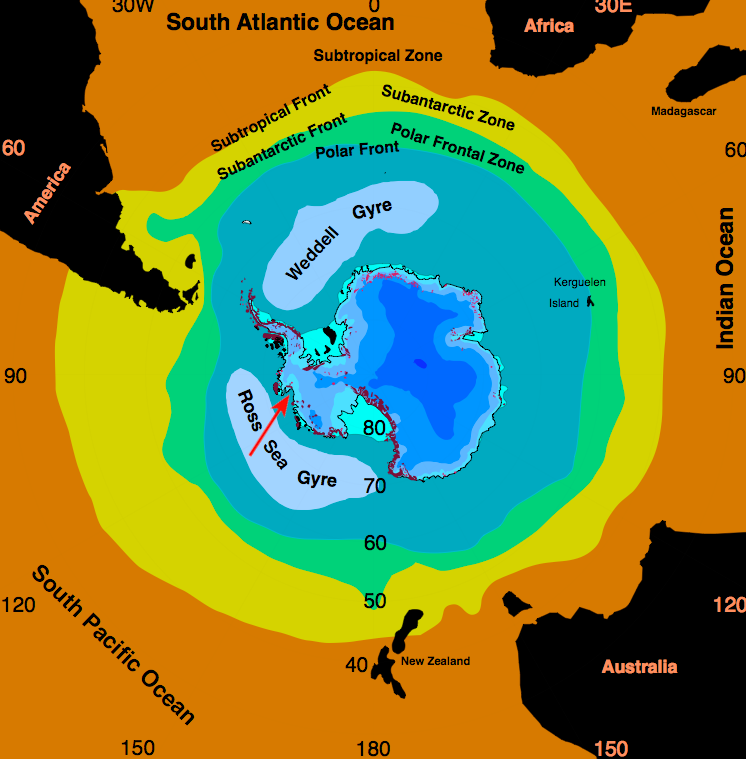Ross Gyre
AAAS: "Dwindling sea ice may speed melting of Antarctic glaciers" 'February, on an icebreaker off the coast of West Antarctica, Robert Larter, a marine geophysicist with the British Antarctic Survey (BAS), came on deck to a startling sight: open gray water as far as the eye could see.' The following day satellite survey found sea ice circling the continent had hit a record low. "Dwindling sea ice could strengthen a clockwise current called the Ross Gyre, bringing warm waters closer to land and hastening the collapse of the West Antarctic ice sheet, which locks up enough water to raise global sea levels by 3.3 meters," just over 10.8 feet. The warmer water + glacial melt resulting from a stronger Ross Gyre already show signs of slowing part of the global ocean's overturning ciruclation, a critical “conveyor belt” of currents which both distributes heat and removes carbon dioxide from the atmosphere, a double whammy. Until a decade ago the ice cover was actually expanding, then 'from 2014 to 2017, the ice began to vanish rapidly, losing more in 3 years than the Arctic had lost in 3 decades.' It rebounded for a few yrs, then resumed its decline, reaching successive lows the last 2 yrs. The Ross Gyre in modeling shows the 'force of surface winds on newly exposed water strengthened the gyre and expanded it, according to a study published last month in Geophysical Research Letters.' The expanding, warming Gyre will warm the water under the Thwaites glacier + accelerate its deterioration. The red arrow shows the location of the famous Thwaties Glacier.
Not good news for the climate. #antarctica #thwaites #climatechange




